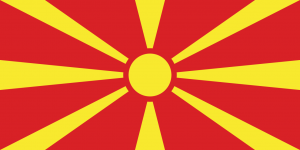Difference between revisions of "Language/Macedonian/Grammar/How-to-Use-Be"
m (Quick edit) |
m (Quick edit) |
||
| Line 73: | Line 73: | ||
|description=In this lesson, we will learn how to use the verb "be" in Macedonian. We will look at the conjugation of the verb and how it is used in different contexts. We will also look at some examples of sentences using the verb "be". | |description=In this lesson, we will learn how to use the verb "be" in Macedonian. We will look at the conjugation of the verb and how it is used in different contexts. We will also look at some examples of sentences using the verb "be". | ||
}} | }} | ||
==Related Lessons== | |||
* [[Language/Macedonian/Grammar/Questions|Questions]] | |||
* [[Language/Macedonian/Grammar/Nouns|Nouns]] | |||
* [[Language/Macedonian/Grammar/Articles|Articles]] | |||
* [[Language/Macedonian/Grammar/Adjectives|Adjectives]] | |||
* [[Language/Macedonian/Grammar/Give-your-Opinion|Give your Opinion]] | |||
* [[Language/Macedonian/Grammar/Conditional-Mood|Conditional Mood]] | |||
* [[Language/Macedonian/Grammar/Plurals|Plurals]] | |||
* [[Language/Macedonian/Grammar/Future-Tense|Future Tense]] | |||
* [[Language/Macedonian/Grammar/Adverbs|Adverbs]] | |||
{{Macedonian-Page-Bottom}} | {{Macedonian-Page-Bottom}} | ||
Revision as of 23:57, 28 February 2023
Hi Macedonian learners! 😊
In this lesson, we will learn how to use the verb "be" in Macedonian. We will look at the conjugation of the verb and how it is used in different contexts. We will also look at some examples of sentences using the verb "be".
The verb "be" is one of the most important verbs in any language. In Macedonian, it is conjugated as follows:
| Person | Singular | Plural |
|---|---|---|
| I | сум | сме |
| You | си | сте |
| He/She/It | е | се |
| We | сме | сме |
| You (plural) | сте | се |
| They | се | се |
The verb "be" is used in many different contexts. It can be used to describe a person's identity, such as nationality, profession, or age. For example:
- Person 1: Јас сум Македонец. (I am Macedonian.)
- Person 2: Тој е архитект. (He is an architect.)
- Person 3: Тие се дваесет години. (They are twelve years old.)
The verb "be" can also be used to describe a person's physical or emotional state. For example:
- Person 1: Јас сум болен. (I am sick.)
- Person 2: Тој е срамен. (He is embarrassed.)
- Person 3: Тие се среќни. (They are happy.)
The verb "be" can also be used to describe a person's location. For example:
- Person 1: Јас сум во куќа. (I am at home.)
- Person 2: Тој е на работа. (He is at work.)
- Person 3: Тие се на плажа. (They are at the beach.)
The verb "be" can also be used to describe a person's possession. For example:
- Person 1: Јас сум имам куќа. (I have a house.)
- Person 2: Тој е има машина. (He has a car.)
- Person 3: Тие се имаат куче. (They have a dog.)
The verb "be" can also be used to describe a person's opinion or belief. For example:
- Person 1: Јас сум мислам дека тоа е лошо. (I think that is bad.)
- Person 2: Тој е верува во Бог. (He believes in God.)
- Person 3: Тие се сметаат дека тоа е добро. (They think that is good.)
The verb "be" can also be used to describe a person's actions or activities. For example:
- Person 1: Јас сум пишувам книга. (I am writing a book.)
- Person 2: Тој е гледа ТВ. (He is watching TV.)
- Person 3: Тие се играат на компјутер. (They are playing on the computer.)
The verb "be" can also be used to describe a person's habits or routines. For example:
- Person 1: Јас сум зборувам со пријатели. (I am talking to friends.)
- Person 2: Тој е чита книги. (He is reading books.)
- Person 3: Тие се играат со играчки. (They are playing with toys.)
➡ If you have any questions, please ask them in the comments section below.
➡ Feel free to edit this wiki page if you think it can be improved. 😎
Related Lessons
